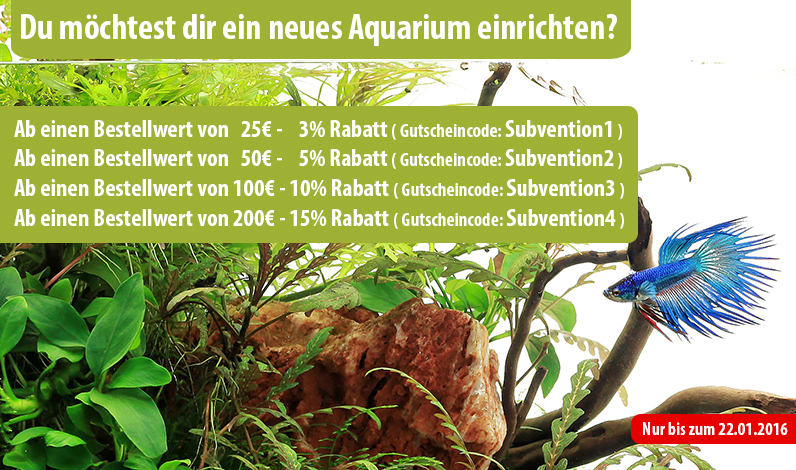10 tips for budding aquarists
10 tips for budding aquarists
We're glad you're interested in aquaristics, and welcome to this fascinating hobby! We are very pleased that you are looking for tips here, and hope that we can make it easier and simpler for you to get started with our advice. With so many animals, plants, setup styles and aquarium sizes, there's a lot to confuse you, and you'll get both good and not-so-good tips - we'll try to bring some order to the confusion here.
1. Take your time. Think carefully about what you want - do you want a big, beautiful, planted community aquarium with colorful fish and invertebrates that will be a real eye-catcher for your living room (or commercial space), for example? A large or even smaller aquarium, where the main focus is to create a landscape under water - so called aquascape, where the plants and decorative elements like roots and stones play the main role? Or do you want a nano aquarium as a small decorative green pearl on your desk? Are you more interested in keeping and possibly breeding certain animals? Spontaneity has rarely been a good advisor when dealing with living creatures, so our tip is: read, read, read. You already know roughly what you want - deal with the matter. There are very good books and websites about the different branches of aquaristics. If you are not a reader: Join a Facebook group or an internet forum and find aquarists in your area. Or find an aquarium club. The people there are happy to help you, and usually there are, in addition to the theoretical start help, also very practical offers to help you with plants and possibly even with animals. You can also read up here in the store - we have a detailed description of all our animals, and also here in the blog you can find some articles mainly about keeping invertebrates.
2. If you are looking for a location for your aquarium, remember that direct sunlight can promote the formation of algae and also heat up the aquarium water very strongly. However, a spot that only gets a few hours of morning or evening sun is perfectly fine. Very large aquariums should rather be placed on load-bearing walls for reasons of statics. In case of doubt: ask a structural engineer! A large tank with an edge length of 1.20 m can quickly weigh 300 to 600 kg with the equipment, not every floor can cope with that ... Nano aquariums do not have this problem. They can also be placed in the middle of the room, e.g. on the desk. Always exciting: Are there sockets there? You need at least two: one for the filter, one for the light. Upwards there is almost no limit ... there are some electrical devices that can be attached to an aquarium, for example heaters or coolers, moonlights for evening lighting, ..
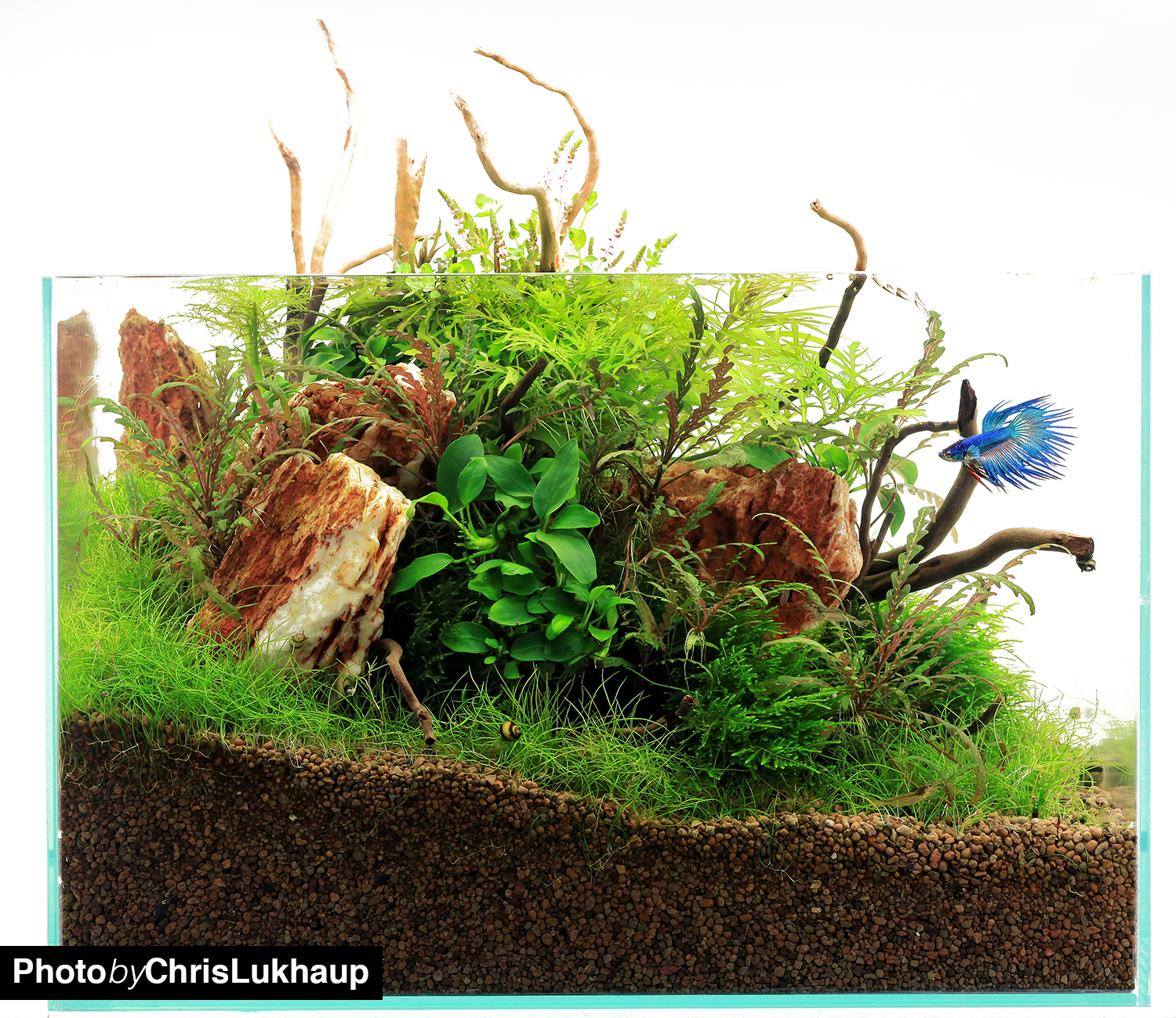
3. Find out what your tap water values are. This can easily be done on the website of your water supplier. First of all, the hardness levels are interesting: total hardness (measured in °dGH, often abbreviated simply as GH) and carbonate hardness (the acid binding capacity, measured in °dKH, often abbreviated as KH). Different fish and invertebrates have different requirements for water values. Water plants also prefer different degrees of hardness. You should take this into account when planning your stocking. If you have already lost your heart in a certain animal or plant species whose needs do not match the water values coming out of your tap: Are you willing to prepare the water for the aquarium for the sake of these creatures (don't worry, it's not half as complicated as it sounds - there are very good ready-made mixtures available today)? If this is too much effort for you, please think again if this animal/plant really suits you. As a rule, you will not have much fun with it.
4. Now you have an idea in which direction the hobby will go for you. Now comes the trickiest and at the same time the most beautiful task: Choose your stock. You know approximately which aquarium size is possible for you, how hard your water is, and you have already found a nice place for the tank. You may even have already decided on a particular decorating style.have you seen an animal in a store or online store that you think you might like and that you feel fits your setup? Take a picture, or write down the name. Then research on your own on the internet or in books, and ask keepers and breeders in forums or social networks for tips from practice. Do not rely on the statements of individual sellers, but inform yourself. With the large number of fish and invertebrates available, it is always best to consult the specialists.
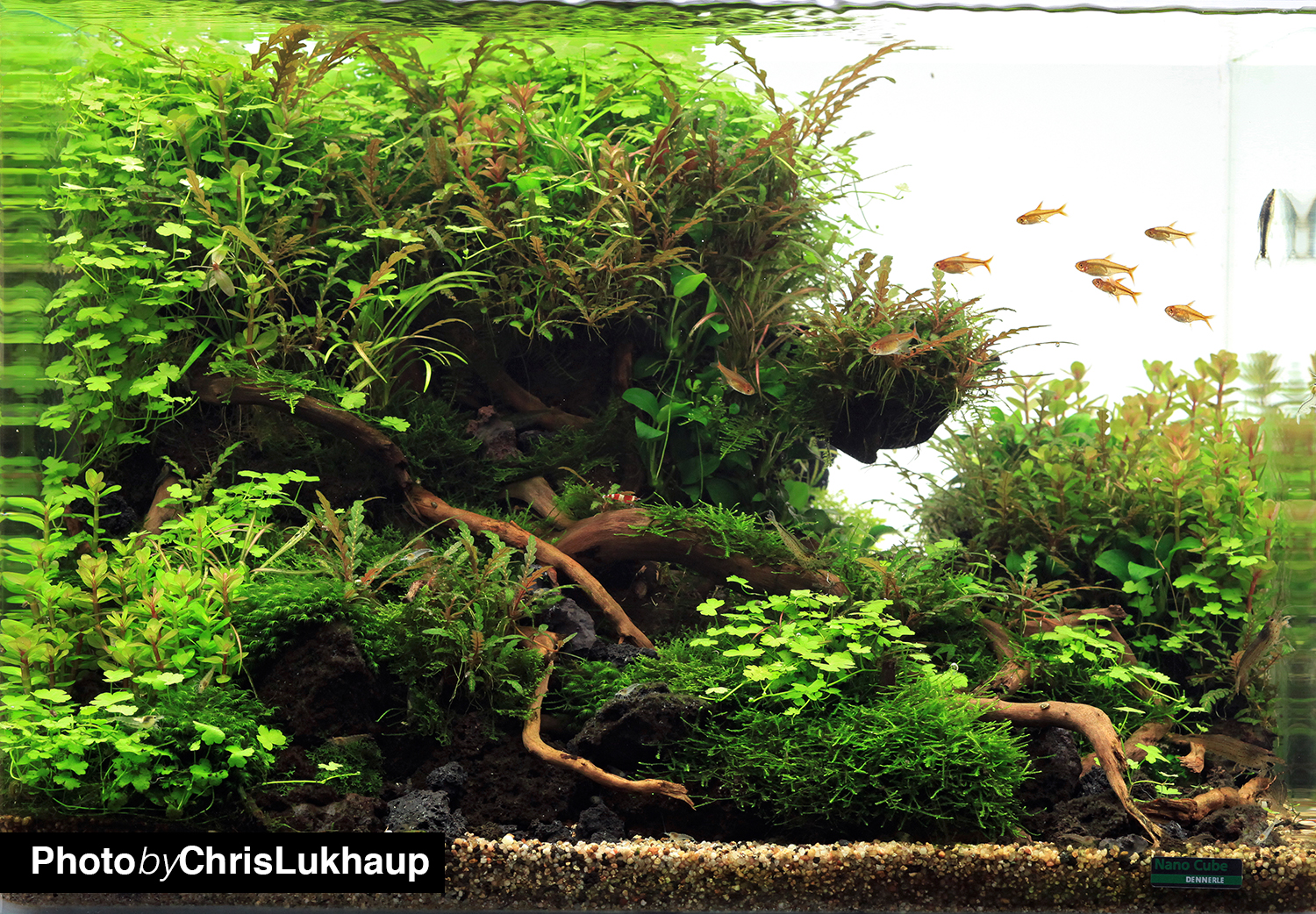
5. Make a rough plan of how you want to decorate and plant the aquarium. In reality it usually looks different, but as an orientation for shopping such a plan is quite practical - you do not want to have too many or too few plants or decoration materials. Having to interrupt the setup of an aquarium because you don't have enough material is really frustrating! Also, choose a substrate that matches your planned stocking (Our blog on substrate) and calculate roughly how much you'll need (there are great websites where you can easily calculate this).
6. Now it's getting practical (finally!!!). You can now go out and buy or order a suitable aquarium. Basically: Complete sets are almost always well suited for beginners and are also usually really attractive in price. If you want to keep dwarf shrimp, for example, it is possible that the filter is not quite as optimal for them. Which filters are suitable for the little crawlers, you can read for example here: Blog about aquarium filters. However, it often pays off to take a complete set and simply replace the filter with a suitable model if necessary.
7. Now place your new aquarium in the place where it will later stand permanently. Full aquariums are difficult to move!
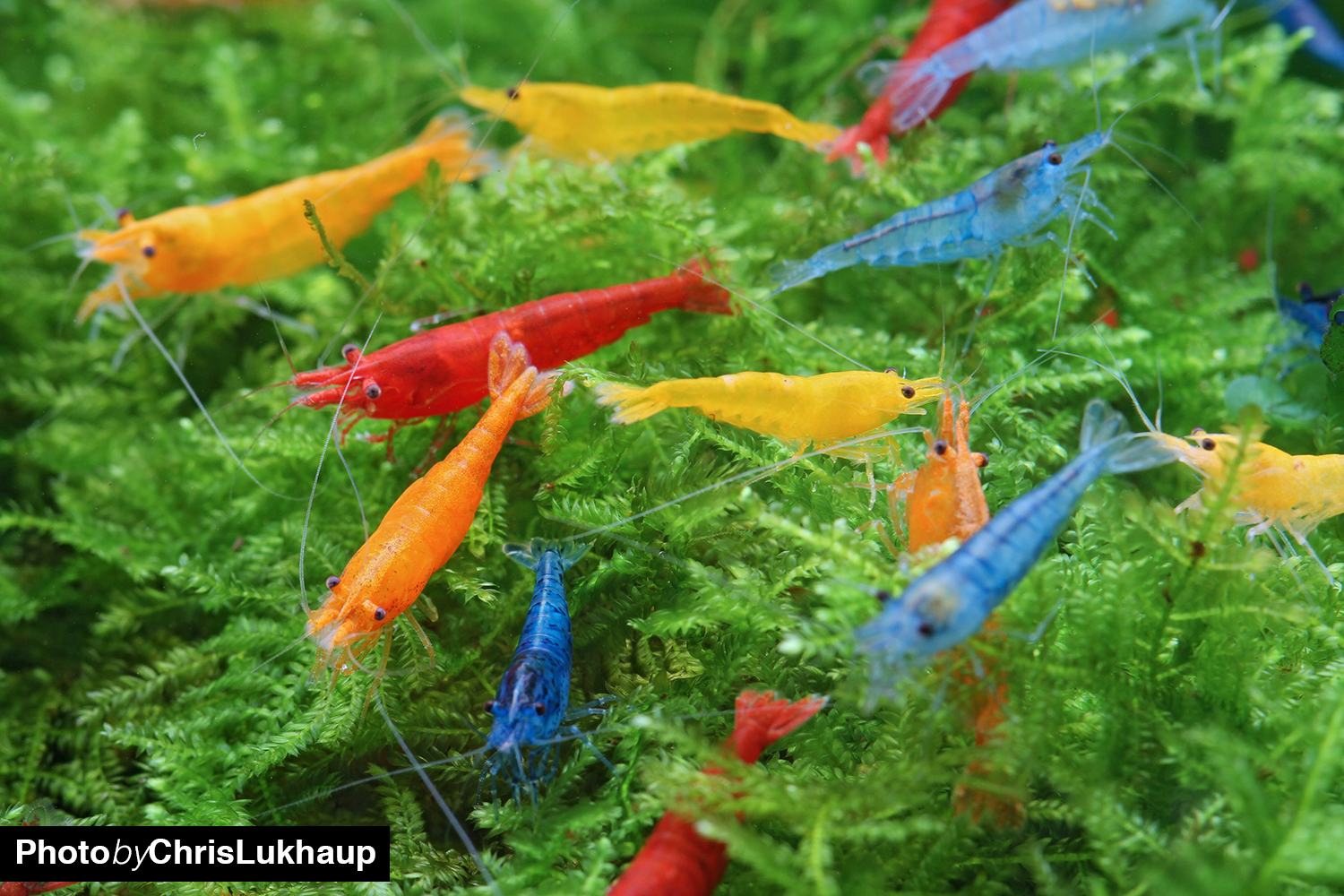
8. Set up your aquarium the way you like it. Basically, high decoration materials and plants should be placed in the back, low ones in the front. Put the decoration first, then the plants. Fill in only a little water (approx. 1/4 of the later water height), and only fill the aquarium completely when you have finished planting. Placing wood, stones and plants is much easier and more comfortable if you don't have to handle half your arm in the water.
To fill: Line the aquarium with paper towels to keep the substrate from being stirred up when you fill the water, and fill the tank preferably with a gentle shower. If you notice that your wooden decoration starts to float up, you can simply weigh it down with a pebble. After some time (depending on the root, this can be several weeks) they will have soaked up water and will stay down by themselves.
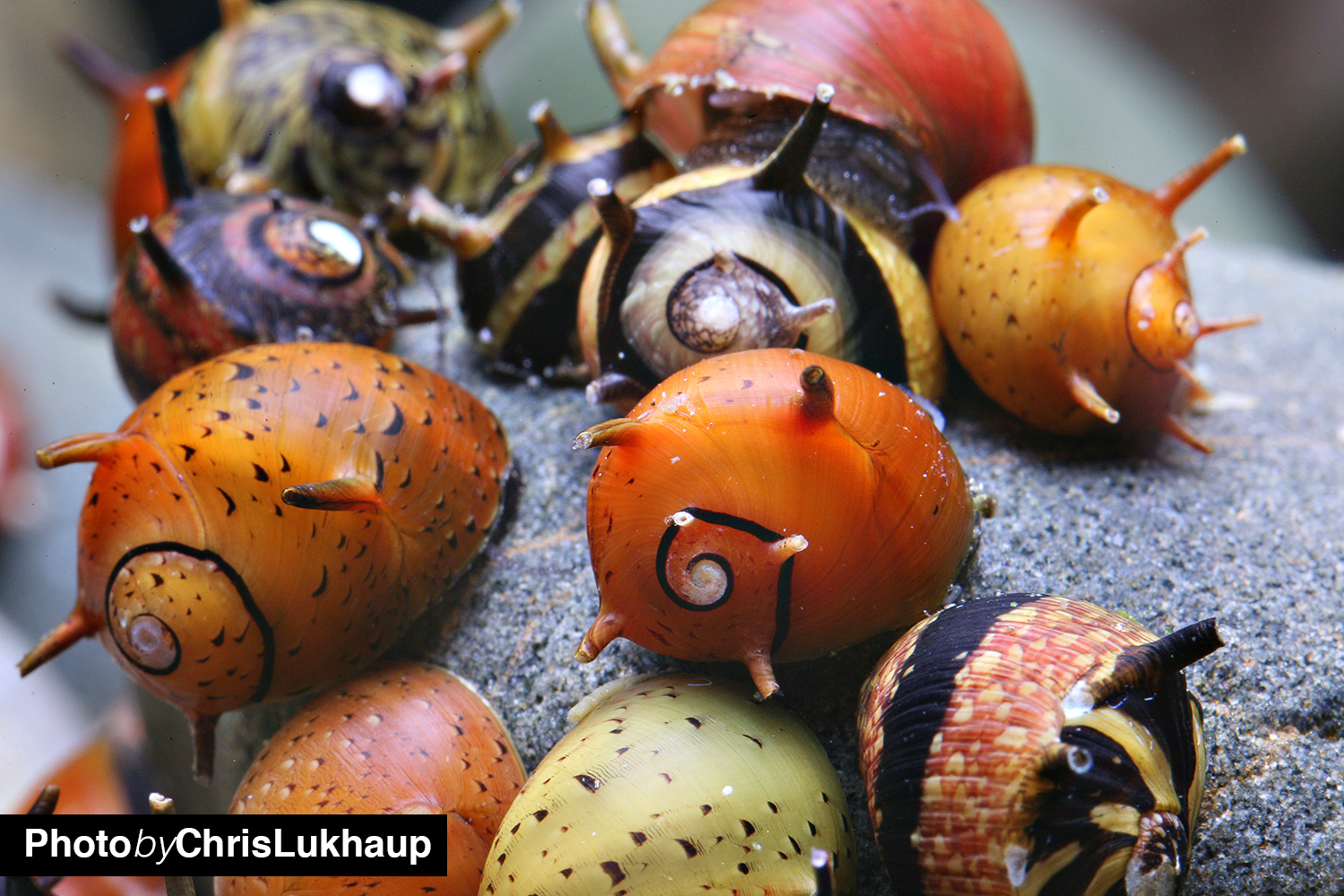
9. At the beginning you will notice that the system has to settle down first. All kinds of small animals can appear, such as brittle fish, ostracods or various worms - don't worry, most of them are harmless. Algae coatings or cotton wool-like bacterial coatings can also appear, and at the beginning it is also possible that snails introduced with the plants will multiply strongly (Our blog on the topic Snail plagues). All of this will settle down over time and scale back to normal levels. New aquariums are allowed almost everything! Let your aquarium settle in peacefully. Patience is the virtue of a true aquarist. When the water values are correct and the nitrite value after a peak, the so-called nitrite peak (GarnelioBlog: Nitrogen cycle in the aquarium), goes back to zero, the first animals can move in.
10. Always remember: Most problems in the aquarium are caused by too much food and too little water change, not by too little food and too much water change...
We wish you a lot of fun with your new hobby! If you have any questions, please do not hesitate to contact us, we will be happy to help you also via our chat.
